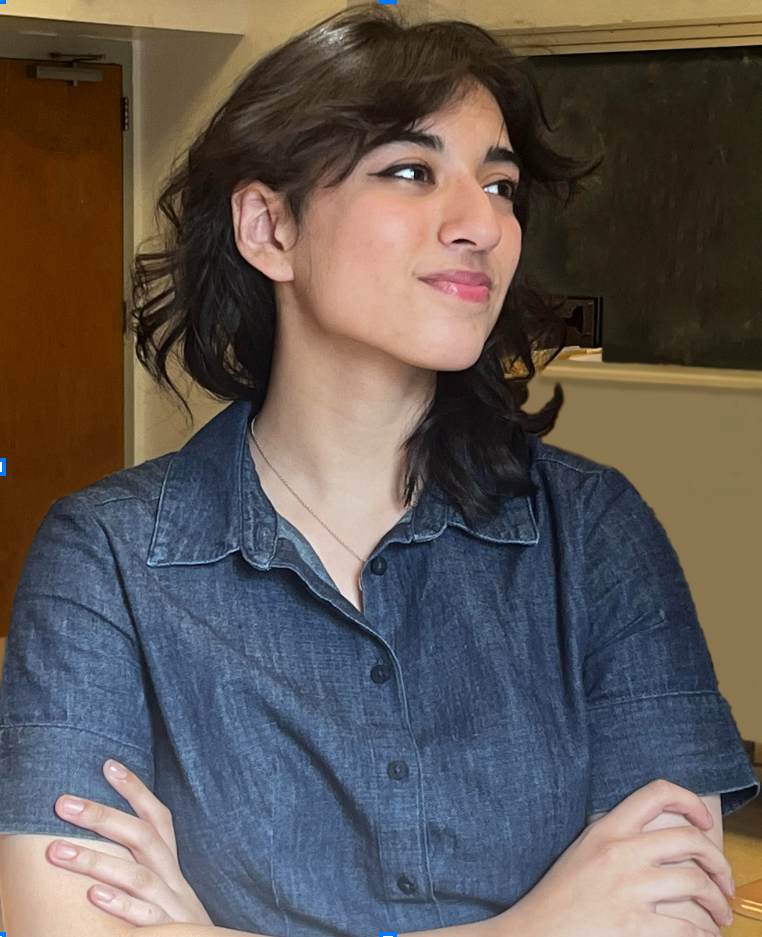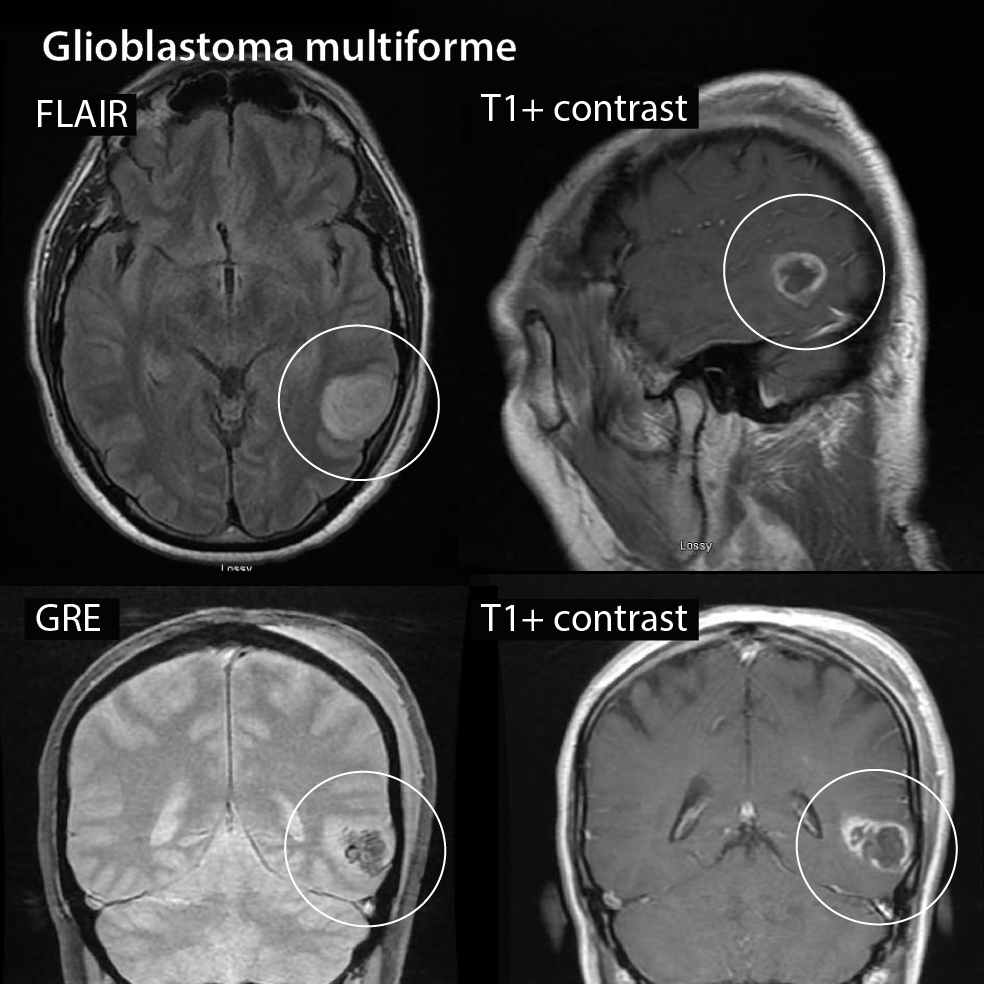.png)

✨ Hi! Welcome to my writing space and thank you for being here.
I'm Eshaal, an 18-year-old based in NYC who's especially interested in medicine, society, and communications/interdisciplinary work. This is primarily where my ideas lie. I'd love to hear your thoughts as well, so feel free to message me using the form on the home page or my linked socials!
Thumbnail image below is from Ditki Medical & Biological Sciences.

Table of Contents
Intro to the Glioblastoma: Piercing and Persistent
It's time to break down some anatomy... both of the brain and the word "glioblastoma!" I went down the classification rabbithole for this one.
Glio refers to the glial cells of the brain. There's a pretty common misconception that brain tissue is composed of neurons upon neurons and nothing else. While, yes, these long-bodied cells are crucial to electrical and chemical transmissions, glial cells actually outnumber neurons in an estimated 3:1 ratio. Their purpose is different, often providing support, structure, and nourishment.
And while we're at it, glioblasts are the precursor cells to glial cells. It's thought that glioblastomas in particular begin to form during this stage of development by DNA mutation. Hence, we see the term blastoma.

As it turns out, glioblastomas, perhaps because they attack during cell developmental stages, are extremely aggressive. Here are just a few surprising aspects of this that I found in my deep dive:

Not to mention that ANY infliction of the brain is scary to the person owning it! The impacts of lesions, tumors, and overall trauma to the brain are far-ranging. The cerebral cortex alone controls many important functions from speech to emotion. I wondered, how is it possible that such an aggressive illness has no cure? Perhaps this is an amateurish question to someone more experienced.
But there is groundbreaking research being done to figure out how options like chemotherapy don't work as well on glioblastomas. UCLA Health just pointed to immune checkpoint blockade as a potential factor last Fall. More is being discovered than every before about this unique form of cancer.
And as innovation tends to do, these new findings are also granting us glimmers of hope. What do you do when a conventional therapy doesn't work?
You get unconventional.
Just as a disclaimer, I'm not claiming any of these treatments to be holy grail solutions - there's still research to be done, tests to be carried out, and findings to discover. These are, however, novel approaches that I found fascinating to look into, and some of them are successfully being used on patients as we speak.
The Electric Approach of Tumor-Treating (TT) Fields Therapy
We humans have the extraordinary ability to move at lightning-quick speeds before we've even processed the need to act. Thousands of neurons constantly jolt signals towards each other at a dizzyingly quick rate. And it is exactly this lightning quality, derived from the electrical signaling capabilities in our brain, that forms the basis for TT fields therapy.
TT fields involve attaching transductors to the scalp to emit electrical pulses. As it turns out, applying different levels of frequency to the brain (the exact extent of this is still being figured out) can interfere with specific electrical activity, which we can then use to our advantage. In this case, the electrical fields seem to directly disturb the process of cell division in cancerous cells. In the case for glioblastoma, a frequency of about 200 kHz is needed to target its cells.


How does this work? Allow me to connect the concepts of cell division and polarity (or the uneven distribution of electrical charge).
Amidst the steps of mitotic division, following the duplication of genetic material and the careful distribution of it into each potential daughter cell, there is the step of cytokinesis.

Cancerous cells often develop when something in this division signaling goes haywire and abnormal cells are uncontrollably multiplied rather than being stopped at a built-in cellular checkpoint (oh, how complex and meticulous life is!). But focus on that last step on the right. Cytokinesis, the ultimate step where each cell is finally cleaved into two new ones, is exactly where a vulnerability lies: electrical charge is now concentrated at the furrow (please see link for fuller detail on how they figured this out, it is fascinating).
Friends, now is a good time to remember that uneven charge distribution = polarity = we can mess with it using electric fields. Bam. TT fields come in and uniquely interfere with cell division.
This therapy, which was actually FDA-approved in 2011, is still being experimented with in order to harness its potential applications in neuronal intervention. There are now increasingly specific survival rates and impacts (including the potential of using macrophages, a type of immune cell, to attack the tumor). However, I did also notice that quite a few of the papers on this subject were in some way sponsored by Novocure, the leading company behind this technology, so I would take a grain of salt with any holy grail claims.
Still... what an interesting approach in lieu of chemotherapy!
Known Drugs, New Applications
Now, these findings are very early in the development stages, so much so that human trials for some of the most promising ones have yet to even begin (research is a multiyear if not multidecade process!). Here is a summary of what I was able to find in my curious reading. I have linked some papers pertinent to the topic but there is ABSOLUTELY more to be read for a fuller understanding of each option.
There are many, MANY other options for me to list. These are just the ones that piqued my curiosity the most.
The Ultrasound?
There are a few things to take into account for glioblastoma treatment development outside of pure attacking power. Toxicity to surrounding cells, quality of life, adverse effects... the ultrasound focuses on the issue of penetrating the blood-brain barrier which otherwise can severely limit how well a medication can work.

This brilliant barrier prevents all sorts of toxins and unnecessary compounds from entering the brain. The brain's environment is sensitive and rather sterile. Unfortunately, this also makes it difficult for certain drugs to reach the brain either. Thiis is where focused ultrasound may help.
Sonodynamic therapy, for example, involves using very focused ultrasound to activate drugs. In the clinical trial outlined by UCSF, prodrugs were activated in away that helped to kill cancerous cells in the brain. Otherwise, those drugs would have been unable to get to those cells at all. In other cases, focused ultrasound could be combined with the use of microbubbles, implanted devices, or other "guides" in order to have the intended effect of briefly opening up the blood-brain barrier to treatment. In fact, this could prove to improve efficacies for all sorts of gliomas.
It should be noted that this is more so a way to improve the permeability of some preexisting therapy - hopping into an ultrasound machine in and of itself is no cure! Additionally, it takes a lot of precision and aid for focused ultrasound to open up the endothelial cells of this barrier at all Please do not misunderstand! Your standard ultrasound is not going to do anything weird to you.
Overall, the sheer amount of creativity and innovation surrounding glioblastoma treatment is a source for hope. Every doctor I have spoken to so far about this article in passing has nodded affirmatively, with those from specialties far separated from neuro still having heard of this deadly ailment. This only signaled to me that there is a community of brilliant minds aiming for its end.
I also have to say that though this is a relatively short article (especially compared to the pages upon pages of work done by researchers), it took an extensively long time for me to write. I started looking into glioblastoma when I began building this very website and have only found myself in a deeper reading session for it every day. Considering that this is not a detailed explanation but rather the understanding of an enthusiastic Pre-med, I thoroughly encourage you to also explore the literature out there, along with the many patient stories associated with it.
If you are in the headspace for it, here is a collection of patient stories from the Glioblastoma Foundation, which you may also donate to.
In any case, thank you for taking the time to understand alongside me! To get notified the next time I post, you can fill out the form below.